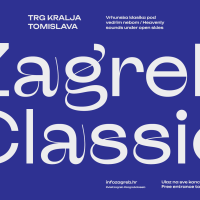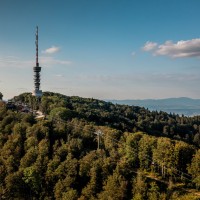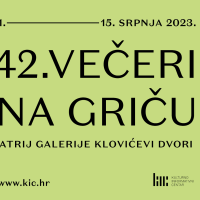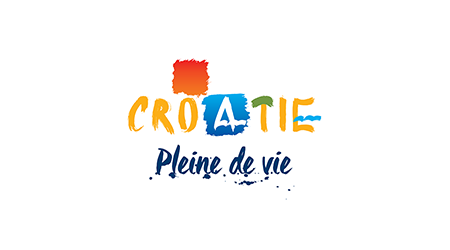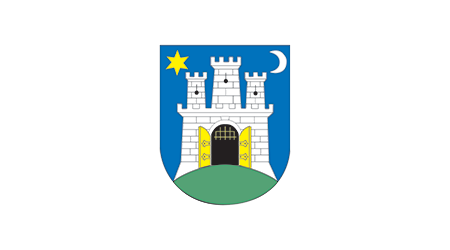Let’s Have a Coffee!
 Between May 8th and October 17th, the Ethnographic Museum will feature an interesting exhibition: “Let’s Have a Coffee!” Apart from the various production and preparation methods, as well as ceremonies tied to coffee, visitors will also have an opportunity to learn about the local coffee drinking culture, which started in Zagreb in the mid 18th century, when the first coffee stands were introduced.
Between May 8th and October 17th, the Ethnographic Museum will feature an interesting exhibition: “Let’s Have a Coffee!” Apart from the various production and preparation methods, as well as ceremonies tied to coffee, visitors will also have an opportunity to learn about the local coffee drinking culture, which started in Zagreb in the mid 18th century, when the first coffee stands were introduced.
Until October 17th, the Ethnographic Museum in Zagreb will feature an interesting exhibition: “Let’s Have a Coffee!” The ritual of drinking coffee at a bar accompanied by friends and loved ones is part of everyday life in Zagreb, where the invitation “let’s have a coffee” is an excuse for a get-together or a date. This unique exhibition is a product of a two year research study conducted as part of the EU project “Entrepreneurial Cultures in European Cities”. Exhibition visitors will have an opportunity to learn about the origin, production, preparation, and specific rituals tied to coffee and its consumption. Various performances, such as “Coffee with the president” or “A beverage for artists”, as well as an array of lectures and workshops on the local coffee drinking culture will be held as part of the exhibition.
Coffee was first brought to Croatia by the Turks in the 16th century and, although initially only drunk by Muslims, it soon became more widely accepted among the Christian population. It first became popular in monasteries in the 18th century, but during the mid 19th century it spread across the upper classes of city dwellers and became their favourite drink. Coffee was available in Zagreb as early as the 18th century, first from tent stands at Harmica (the modern day Square of Ban Josip Jelačić), near the Manduševac well, and then at the city’s coffee houses. One of the first coffee houses in Zagreb was the Theatre Coffee House, which opened in 1794 in the old Amadeo Theatre on Demetrova Street; it was frequented by writers, artists, politicians, and actors. At the turn of the century, between the 19th and the 20th centuries, Zagreb boasted a total of 25 coffee houses.
Since the mid 19th century, Zagreb’s citizens have nurtured the culture of mutual house visits, which quintessentially included coffee serving. Coffee was typically consumed in Biedermeier salons, which were a place of gathering and social interaction, and served in porcelain cups that were predominantly manufactured in Czech or Viennese factories.
The industrial production of coffee in Croatia is tied to the Franck factory, which was founded in Zagreb in 1892 under the name Heinrich Franck Söhne; it began operations on the city’s periphery a year later. Concurrently with the founding of this German company, fields of noble chicory were established in Moslavina, while the selling point and drying depot were set up in Bjelovar. The Franck factory has an interesting story, which is part of global history. In 1827, a young but very successful businessman Johann H. Franck managed to process noble chicory into a coffee substitute, thereby bringing coffee, which was very expensive back then, to the regular folk. He got the idea for the production of the world’s first coffee substitute whilst travelling in France, where he had seen the local peasants make a tasty warm beverage from the chicory garden plant. Upon returning to Germany, he bought seedlings, established plantations, founded a factory and got his entire family involved with the business. The business was inherited by his son Wilhelm, who opened modern coffee factories in Belgium, Italy, Switzerland, America, and, of course, Croatia. That is how, in the late 19th century, the Franck Company became the first multinational corporation in the region.
Published: 02.06.2010
 Hrvatski
Hrvatski English
English Deutsch
Deutsch Spanish
Spanish French
French Italian
Italian Russian
Russian Korean
Korean Japanese
Japanese Chinese
Chinese Between May 8th and October 17th, the Ethnographic Museum will feature an interesting exhibition: “Let’s Have a Coffee!” Apart from the various production and preparation methods, as well as ceremonies tied to coffee, visitors will also have an opportunity to learn about the local coffee drinking culture, which started in Zagreb in the mid 18th century, when the first coffee stands were introduced.
Between May 8th and October 17th, the Ethnographic Museum will feature an interesting exhibition: “Let’s Have a Coffee!” Apart from the various production and preparation methods, as well as ceremonies tied to coffee, visitors will also have an opportunity to learn about the local coffee drinking culture, which started in Zagreb in the mid 18th century, when the first coffee stands were introduced. 